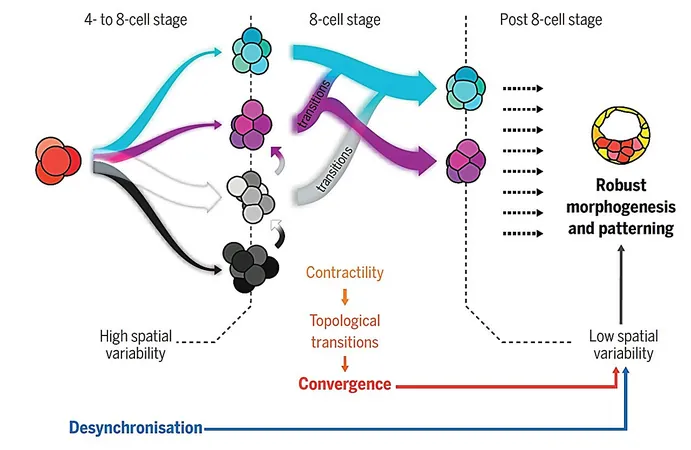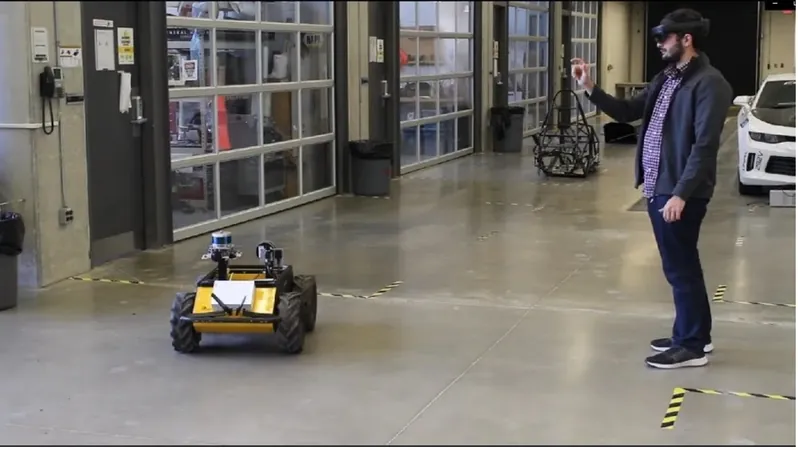
From Chaos to Structure: The Surprising Journey of Embryonic Development
2024-10-10
Author: Olivia
Have you ever wondered how a single fertilized egg transforms into a fully structured organism? It's a mind-boggling process, filled with chaos and unpredictability, yet the final product emerges with astonishing consistency. Scientists from the Institute of Science and Technology Austria (ISTA) have cracked part of this mystery, revealing profound insights into the early stages of mammalian embryonic development.
In a serendipitous twist during a scientific retreat in Spain, researchers Bernat Corominas-Murtra and Edouard Hannezo stumbled upon groundbreaking discussions spurred by an intriguing dataset on embryonic morphogenesis shared by Dimitri Fabrèges, a postdoc from the Hubrecht Institute in the Netherlands. What began as an engaging dialogue has blossomed into a significant publication in the prestigious journal Science.
The core of their research tackles the fascinating process of morphogenesis—the journey through which a fertilized egg undergoes multiple cell divisions and forms a structure known as the blastocyst, the precursor to all organs and tissues. This process, although chaotic at the cell level, leads to a remarkably uniform structure across different mammalian species, including mice, rabbits, and monkeys.
Decoding Early Development
Embryonic development kicks off when an egg cell meets a sperm, instigating a cascade of cell divisions. Initially, the divisions appear haphazard; single cells split into two, then four, and so on. While organisms like the model roundworm, C. elegans, exhibit highly coordinated cell divisions resulting in identical cell counts across individuals, mammalian embryos thrive on randomness. This disparity raises vital questions: How can mammalian embryonic development remain so consistent despite such disorder?
To answer this question, the research team built an innovative tool called a 'morphomap.' This high-dimensional map visualizes the developmental processes of embryos, providing a clear lens through which to analyze their morphogenesis over time and space. By quantitatively examining this rich dataset, they defined what normal embryonic development entails, shedding light on inter-embryo variability.
During their analysis, they observed a striking phenomenon: early embryonic divisions appeared chaotic until reaching the eight-cell stage, where the embryos suddenly aligned in shape and structure. This pivotal moment raises the inquiry—what mechanism orchestrates this transformation from chaos to order?
The Embryonic Rubik's Cube
Using their theoretical physics expertise, Corominas-Murtra and Hannezo proposed a fascinating model to explain this process. Surprisingly, they found that the intricate shape of an embryo can be approximated by studying the connections between cells, akin to the connections found in a social network. By focusing on how cells physically interact and group together, they established a simpler framework for analyzing embryonic morphology.
Their findings suggest that embryos naturally gravitate toward specific configurations that minimize energy, effectively guiding them toward a shared shape amidst chaos. Picture it as each embryo navigating through its own Rubik’s cube, adjusting its cell arrangements to ultimately reveal the optimal structure.
Understanding Normality to Combat Abnormality
The implications of this research are vast. By grasping how variability and chaos contribute to normal embryonic development, scientists stand on the precipice of groundbreaking advancements in several areas. Insights gained from this study could enhance our understanding of developmental abnormalities, potentially informing strategies in disease research, regenerative medicine, and fertility treatments.
In fact, this knowledge may one day aid in optimizing in vitro fertilization (IVF) procedures by helping medical professionals select the healthiest embryos, thereby increasing implantation success rates.
Conclusion: Embracing the Chaos
Ultimately, this study underscores a remarkable truth: chaos and order are inextricably linked in the tapestry of life. As researchers continue to unravel the complexities of embryonic development, they open new doors to understanding the very foundation of life itself. The dance between chaos and structure might just be nature's way of ensuring resilience during the formative stages of an organism's life.









 Brasil (PT)
Brasil (PT)
 Canada (EN)
Canada (EN)
 Chile (ES)
Chile (ES)
 España (ES)
España (ES)
 France (FR)
France (FR)
 Hong Kong (EN)
Hong Kong (EN)
 Italia (IT)
Italia (IT)
 日本 (JA)
日本 (JA)
 Magyarország (HU)
Magyarország (HU)
 Norge (NO)
Norge (NO)
 Polska (PL)
Polska (PL)
 Schweiz (DE)
Schweiz (DE)
 Singapore (EN)
Singapore (EN)
 Sverige (SV)
Sverige (SV)
 Suomi (FI)
Suomi (FI)
 Türkiye (TR)
Türkiye (TR)